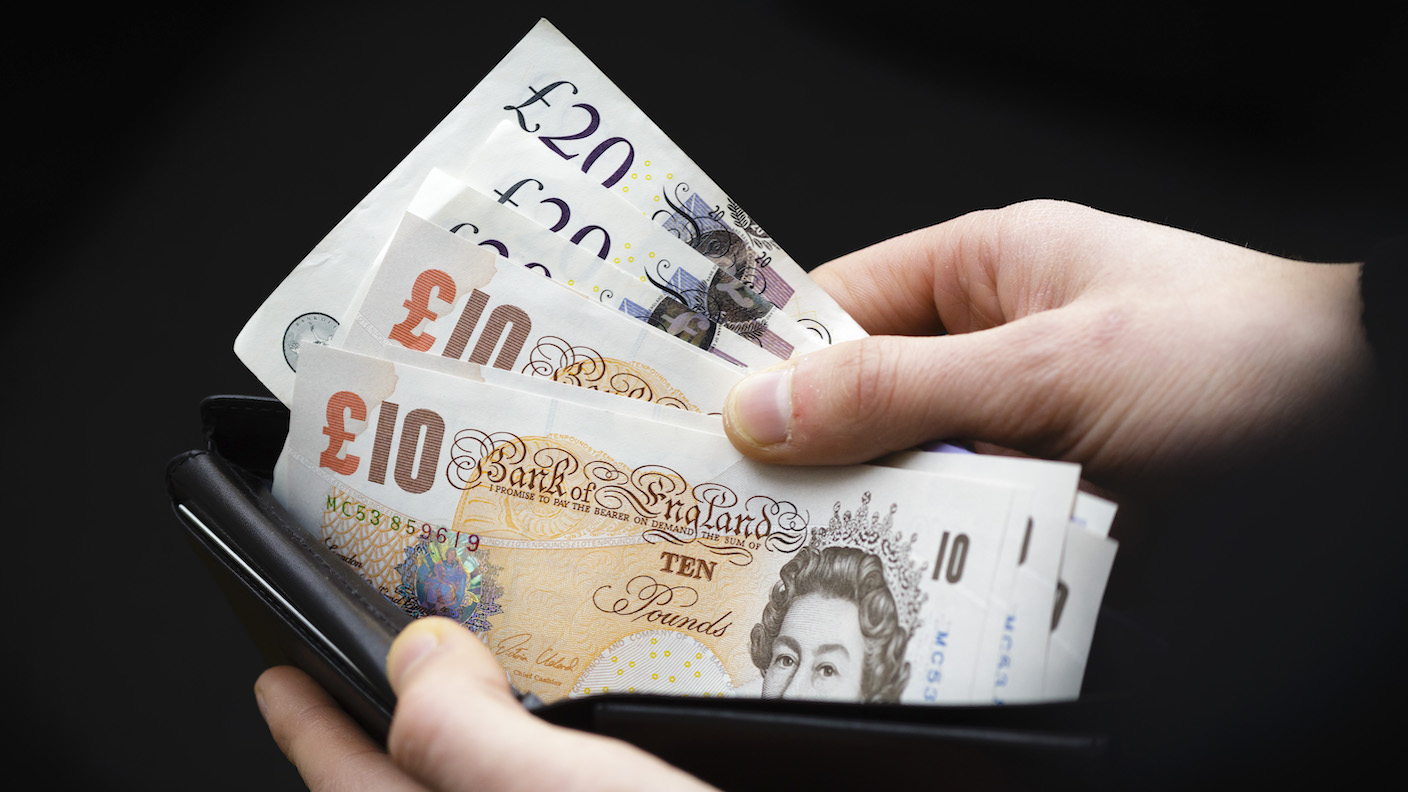The most important economic trend of the last 40 years is about to reverse
The relevance of the time value of money – that today's money is worth more than tomorrow's money – has diminished in recent decades. But it's about to reassert itself with a bang. John Stepek explains why, and what it means for you.


“A bird in the hand is worth two in the bush”, or so the old saying goes. But is it always the case? What if the bird in your hand is a manky old London pigeon, and the two in the bush are fat juicy organic hand-reared turkeys, and Christmas is just around the corner? You sure you wouldn’t be better off taking a crack at the two in the bush instead?
Right now, I realise that you are probably not pondering the relative merits of pigeons and turkeys. Instead you are probably thinking: “What on earth is he gibbering about?” But the question is of huge relevance to the current investment environment – and the massive change that may be about to engulf it.
What happens if the time value of money goes into reverse?
The time value of money is one of the most basic concepts in finance. It might be as close to a Newtonian-physics-style rule as you’ll get in this murky arena. In short, money today is worth more than money tomorrow, or in a year’s time. Or to put it another way, the bird in the hand is worth two in the bush. However, there’s quite a bit of wiggle room in there. Money today might indeed be worth more than the same amount of money in a year’s time. But how much more? How much bigger would the sum I’ll promise to pay you a year from now have to be in order to convince you to turn down getting paid today? That depends.
MoneyWeek
Subscribe to MoneyWeek today and get your first six magazine issues absolutely FREE

Sign up to Money Morning
Don't miss the latest investment and personal finances news, market analysis, plus money-saving tips with our free twice-daily newsletter
Don't miss the latest investment and personal finances news, market analysis, plus money-saving tips with our free twice-daily newsletter
One factor is risk. You can have your money today, after all. Can you be sure that I’ll actually pay you at this time next year? (This is what the “two in the bush” alludes to – not only are the birds further away, but they might also fly off before you can nab them.)
Another factor is inflation. If inflation is high, then money in your pocket today is worth a lot more than money a year from now. In fact, if you’re unlucky enough to be living in a hyper-inflating economy (such as Venezuela) then the wage packet you got this morning will be worth a lot more than the one you’re due to get in the afternoon. So in a high-inflation environment, you need to get paid a lot more to wait. If I want you to forgo the £100 in your hand today, I’ll need to give you £120 in a year, say, to preserve your purchasing power. If inflation is low, then you won’t be as worried about waiting to get your money. And the sum won’t have to be much larger to convince you to wait. You might forego the £100 today in exchange for £105 in a year.
A related factor is the return you can get on your money. If interest rates are high, then you can stick today’s money in the bank, and by next year, it’ll have grown. So if I’m asking you to wait for a year to get paid instead, then I’ll need to offer you more money to compensate you for that foregone interest. And that brings us to what’s interesting about today’s environment. A combination of deflationary pressure and even lower interest rates since the 2008 financial crisis, mean that – in some cases – the time value of money has gone into reverse.
If you’re a big saver in certain countries, then you will be charged to sit on money, in the form of negative interest rates. In those circumstances, money today is actually worth less than the same sum of money a year from now. If you put £100 in the bank today, it might have shrunk to £95 by this time next year. So if I promised to pay you £98 instead, you’d probably be willing to wait (assuming you think I’m both solvent and honest).
You can phrase it differently. In normal times, the present and near future are worth more than the distant future. But as interest rates and inflation fall, the “spread” (the gap in valuation) between the two shrinks, to the point where there may be almost no perceived valuation difference between present and future. And if rates go negative, it might even reverse. The future might be worth more than the present.
We have gone from a point in the late 1970s/early 1980s where the present was worth much more than the future. Inflation was high and so were interest rates. Money today was worth a lot more than money tomorrow. That spread has narrowed consistently ever since then, up until now, when we’re at a point where the future is worth at least as much, if not more than, the present. This concept explains most of what’s been happening in markets in the last four decades, but particularly since the financial crisis of 2008. More importantly, it can give us some clues as to what will happen when it reverses. Which is what I suspect is on the verge of happening.
Here’s why Tesla is so highly valued
If the future is worth the same as, or more than the present, and that trajectory is expected to continue, then that drives up the value of any fixed income stream. And the longer you can lock in that payment, the more valuable it is. Hence bonds have done well, and long-dated bonds have done very well. If the future is worth the same as, or more than the present, then companies with little or no cash flow but big dreams for a bright future will be valued more highly than companies with plenty of cash flow but an uncertain future. Hence tech stocks have absolutely trounced oil stocks, for example.
You might be thinking – yes, but what about the risk of not getting paid? However, you’d be forgetting that central banks have been massively suppressing both volatility and bankruptcy risk for decades now, and in particular since 2008. So the valuation penalty applied to “big audacious dreams" is tiny to non-existent.
Tesla is probably the epitome of these stocks. It’s a company whose present valuation is based entirely on two key things. The first is specific to the company. That is, the dream scenario (for Tesla investors) in which Tesla becomes the Apple of electric car manufacturers. The car itself becomes a desirable mass-market luxury good, like the iPhone, while Tesla also creates its own walled garden of driverless technology software and battery expertise – or something along those lines. In short, electric, self-driving cars become the dominant form of transport, and Tesla becomes the dominant player, or even the monopolist in that market.
That sounds like quite a wild scenario. And even if it does pan out, then it’s surely still quite a long way into the future. But that’s where the second key thing comes in, which is all about the “big picture” backdrop we’ve outlined above. In a world where the future and the present have the same value, it doesn’t matter how far into the future Tesla’s dream scenario lies. And in a world where central banks have eliminated credit risk (in as much as they can), then there’s no real benefit in being sceptical about Tesla’s prospects.
What happens if the future stops being as highly valued as the present?
So what happens next? Well, we’ve run out of space here today, so I’ll carry this on tomorrow (information has a time value too, but I’m hoping that’s not too long to wait).But suffice to say, if the valuation spread between “today" and “tomorrow" starts to widen again, as opposed to the continual narrowing we’ve seen since around the early 1980s, then the obvious result is this: the assets that have done well, will stop doing well. And the assets that have done badly, will stop doing badly.
To be continued. And if you can’t wait, then we’ve been discussing this topic in a lot of different ways in MoneyWeek magazine for many months now, so please do subscribe – you can get six issues free right now which is a good deal regardless of how much a bird in the hand is worth versus those two in the bush.
Get the latest financial news, insights and expert analysis from our award-winning MoneyWeek team, to help you understand what really matters when it comes to your finances.
John Stepek is a senior reporter at Bloomberg News and a former editor of MoneyWeek magazine. He graduated from Strathclyde University with a degree in psychology in 1996 and has always been fascinated by the gap between the way the market works in theory and the way it works in practice, and by how our deep-rooted instincts work against our best interests as investors.
He started out in journalism by writing articles about the specific business challenges facing family firms. In 2003, he took a job on the finance desk of Teletext, where he spent two years covering the markets and breaking financial news.
His work has been published in Families in Business, Shares magazine, Spear's Magazine, The Sunday Times, and The Spectator among others. He has also appeared as an expert commentator on BBC Radio 4's Today programme, BBC Radio Scotland, Newsnight, Daily Politics and Bloomberg. His first book, on contrarian investing, The Sceptical Investor, was released in March 2019. You can follow John on Twitter at @john_stepek.
-
 How gifting money this Christmas could lower your inheritance tax bill
How gifting money this Christmas could lower your inheritance tax billCash is an easy and quick present to give over Christmas – and it could protect some of your estate from the taxman down the line
-
 £100 contactless card limit to be lifted
£100 contactless card limit to be liftedConsumers will be able to set their own contactless limits from March 2026, under new rules from the Financial Conduct Authority
-
 Halifax: House price slump continues as prices slide for the sixth consecutive month
Halifax: House price slump continues as prices slide for the sixth consecutive monthUK house prices fell again in September as buyers returned, but the slowdown was not as fast as anticipated, latest Halifax data shows. Where are house prices falling the most?
-
 Rents hit a record high - but is the opportunity for buy-to-let investors still strong?
Rents hit a record high - but is the opportunity for buy-to-let investors still strong?UK rent prices have hit a record high with the average hitting over £1,200 a month says Rightmove. Are there still opportunities in buy-to-let?
-
 Pension savers turn to gold investments
Pension savers turn to gold investmentsInvestors are racing to buy gold to protect their pensions from a stock market correction and high inflation, experts say
-
 Where to find the best returns from student accommodation
Where to find the best returns from student accommodationStudent accommodation can be a lucrative investment if you know where to look.
-
 The world’s best bargain stocks
The world’s best bargain stocksSearching for bargain stocks with Alec Cutler of the Orbis Global Balanced Fund, who tells Andrew Van Sickle which sectors are being overlooked.
-
 Revealed: the cheapest cities to own a home in Britain
Revealed: the cheapest cities to own a home in BritainNew research reveals the cheapest cities to own a home, taking account of mortgage payments, utility bills and council tax
-
 UK recession: How to protect your portfolio
UK recession: How to protect your portfolioAs the UK recession is confirmed, we look at ways to protect your wealth.
-
 Buy-to-let returns fall 59% amid higher mortgage rates
Buy-to-let returns fall 59% amid higher mortgage ratesBuy-to-let returns are slumping as the cost of borrowing spirals.
